The Central Axis is the best preserved core area of the old city of Beijing. Starting from Yongdingmen Gate in the south to the Bell Tower in the north, the axis stretches over 7.8km and passes through Qianmen (Zhengyangmen), Tian'anmen Square, the Forbidden City, the Jingshan Hill, Di'anmen Gate, the Drum Tower, and the Bell Tower.
The Central Axis of Beijing was first built in the Yuan Dynasty (mid-13th Century), was developed and perfected in the Ming and Qing dynasties (early 14th century to early 20th century). Today the Central Axis remains intact, with many of its original buildings and gates. It is on the tentative list for UNESCO cultural heritage, an application for which was submitted in September, 2013.
1. Yongdingmen
Yongdingmen Tower was the southern beginning of Beijing Central Axis in the Ming and Qing Dynasties, which was also the highest gate of the seven in Beijing's outer city. Yongding means the everlasting stability of the imperial capital.
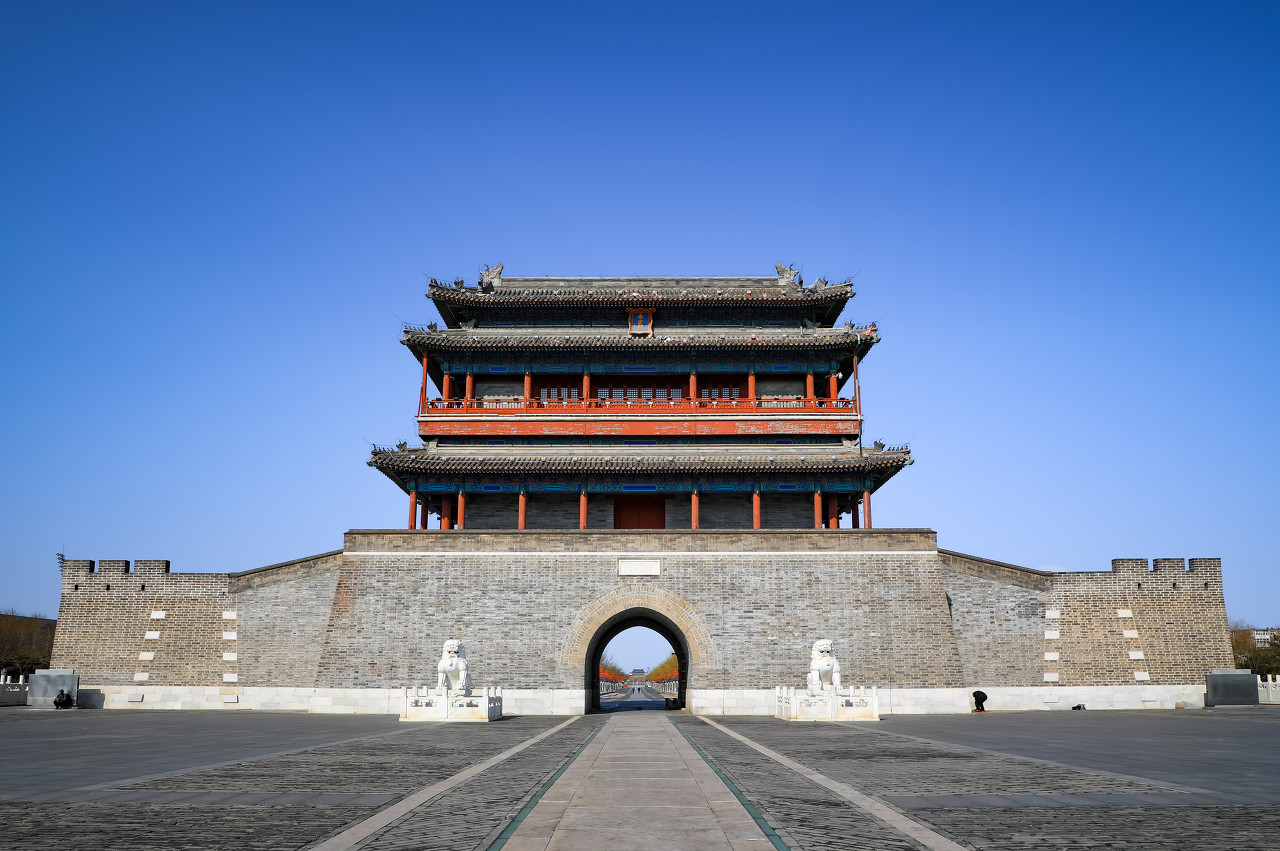
Yongdingmen Tower[Photo via tuchong.com]
In the past, Yongdingmen was the important pass from Beijing to Jingnan that had a very prosperous business; and outside Yongdingmen was one of the most beautiful landscapes in the gates of Beijing's outer city. The original gate was made up of battlement, barbican, and a gate tower; and it was demolished in the 1950s. It was rebuilt in 2004 in order to restore the southern end of the Beijing Central Axis and the important symbol of the south city.
Address: Yongdingmennei Avenue, Dongcheng District
Route: Take Subway Line14 and get off at Yongdingmenwai Station
2. Tiantan Park
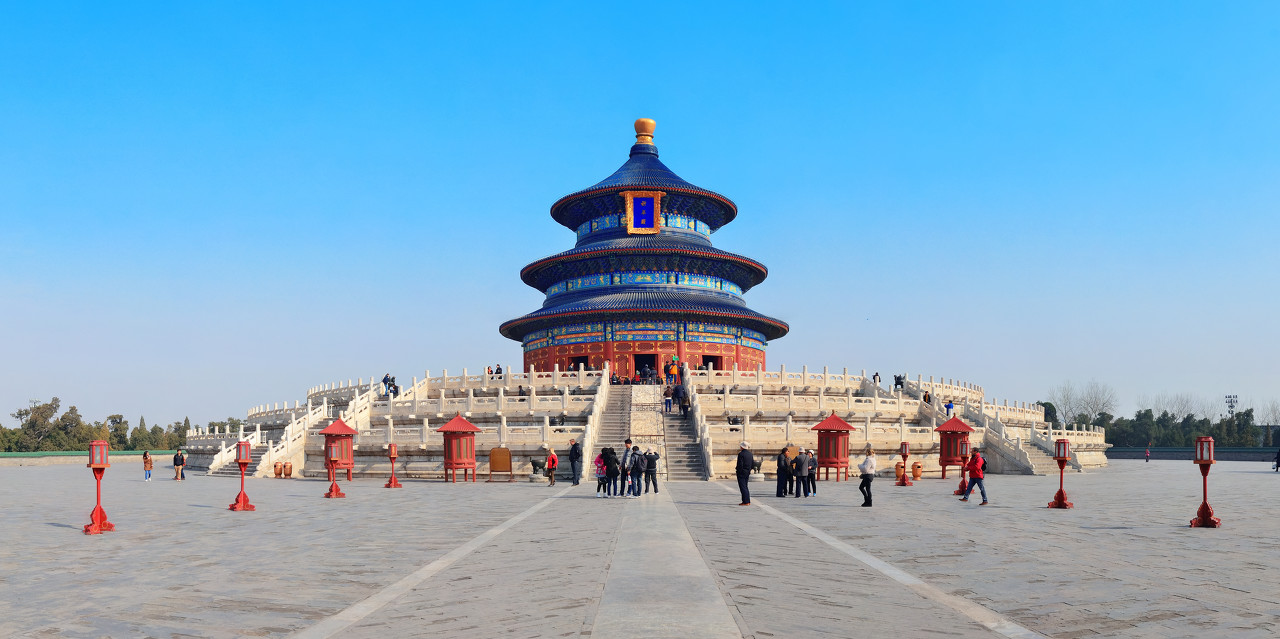
Tiantan Park [Photo via tuchong.com]
Tiantan Park is where the Temple of Heaven was located in the Ming and Qing Dynasties. As the special sacrificial altar for emperors in the Ming and Qing dynasties to worship heaven, as well as pray for rain and a bumper harvest year, the Temple of Heaven is the world's extant architectural complex of largest scale for heaven worship in ancient times, which is in the most perfect structure. The Temple of Heaven consists of the Qigu and Circular Mound Altars. Embraced by dual walls, the Temple of Heaven is divided into two sections of inner and outer altars, of which the northern part is semi-circular and the southern part is square. Architectures for sacrifice are mainly located in the inner altar, with entrances being arranged on four walls. The gap between two altars is a masonry platform that is 360m long, 28m wide, and 2.5m high, embodying the connotation that an endless journey shall be embarked on to heaven.
Address: No. A-1, Tiantan East Rd, Dongcheng District
Route: Take Subway Line 5 and get off at Tiantan Dongmen Station
3. Zhengyangmen
Formerly named “Lizhengmen”, Zhengyangmen is commonly known as “Qianmen” among the people. With a history of more than 500 years, Zhengyangmen is located in the south of the inner city, which borders the south edge of Tian’anmen Square and the north end of Qianmen Street. Seated on the north-south axis line of Beijing, Zhengyangmen has preserved the gate and archery towers.
Address: Qian Men East Street, Dongcheng District
Route: Take Subway Line 2 and get off at Qianmen Station
4. Xiannong Altar
Located to the west of Yongdingmen Street, Xicheng District, Xiannong Altar is the place where emperors of the Ming and Qing dynasties worshipped the Xiannong God. The altar was built in the Jiajing period of the Ming dynasty and there are still several altars remaining such as the Guangeng Platform, Shen Cang, Taisui Hall, and Qingcheng Palace.

Xiannong Altar [Photo via tuchong.com]
The square altar was built by bricks and its about 15 meters long, 1.5 meters high. On the north of the altar, there is a main hall with 5 large rooms. The memorial tablet of Xiannong is in the main hall and the east room is where sacrificial animals and other things used for the worship ceremonies were while the worship kitchen where the offerings were cooked lies in the west.
During the Republic of China era, Xiannong Altar was once changed to Chengnan Park and the southeast part of the altar was temporarily used as a stadium. The northern part eventually became markets and streets.
Address: Yongdingmen Street, Xicheng District
Route: Take Bus No. 17, 20, 36 or 54 and get off at Xiannong Altar Station
5. Tian'anmen Square
Tian'anmen Square, one of the largest civilian squares in the world, covers an area of 440,000 square meters. That's 500 meters from east to west and nearly 900 meters from north to south. It has witnessed numerous historical episodes in modern Chinese history. It is a must-see for visitors to Beijing.
The Tiananmen Rostrum is the majestic structure that sits at the northern end of the square, facing south. Its stature and positioning represent authority and power. The Rostrum was first built in the early 15th century and in the mid 17th century it became known as the Tian'anmen, or Gate of Heavenly Peace. It was on this building that Chairman Mao proclaimed the founding of the People’s Republic of China on October 1st, 1949.
On the eastern side of the square sits the National Museum of China.
Opposite of the Tiananmen Rostrum on the southern edge of the square is the Chairman Mao Memorial Hall.
On the western edge of the Square stands the Great Hall of the People.
The National Flag Pole is in the middle of the square, where the Chinese National Flag is hoisted every day at sunrise, and lowered at sunset. These ceremonies are watched daily by hundreds of thousands of people.
Finally, a little further south to the flag pole stands the towering Monument to the People’s Heroes.
Address: North of the Tian'anmen Square, Dongcheng District
Route: Take Subway Line 1 or take Bus No. 1, 5, 10, 20, or 52 and get off at Tian'anmen East Station.
6. The Imperial Ancestral Temple
The Working People's Cultural Palace of east Tian'anmen Square is the Imperial Ancestral Temple of the Ming and Qing Dynasties. The Imperial Ancestral Temple was the home temple for emperors making sacrifices to ancestors. It was built in the Yongle reign of the Ming Dynasty (1420) and covered an area of more than 133.400 square meters, which was constructed based on the Chinese ancient and traditional etiquette of “Jin Tian Fa Zu (to learn and apply the laws of Nature in a manner of awe and rigorousness)”.
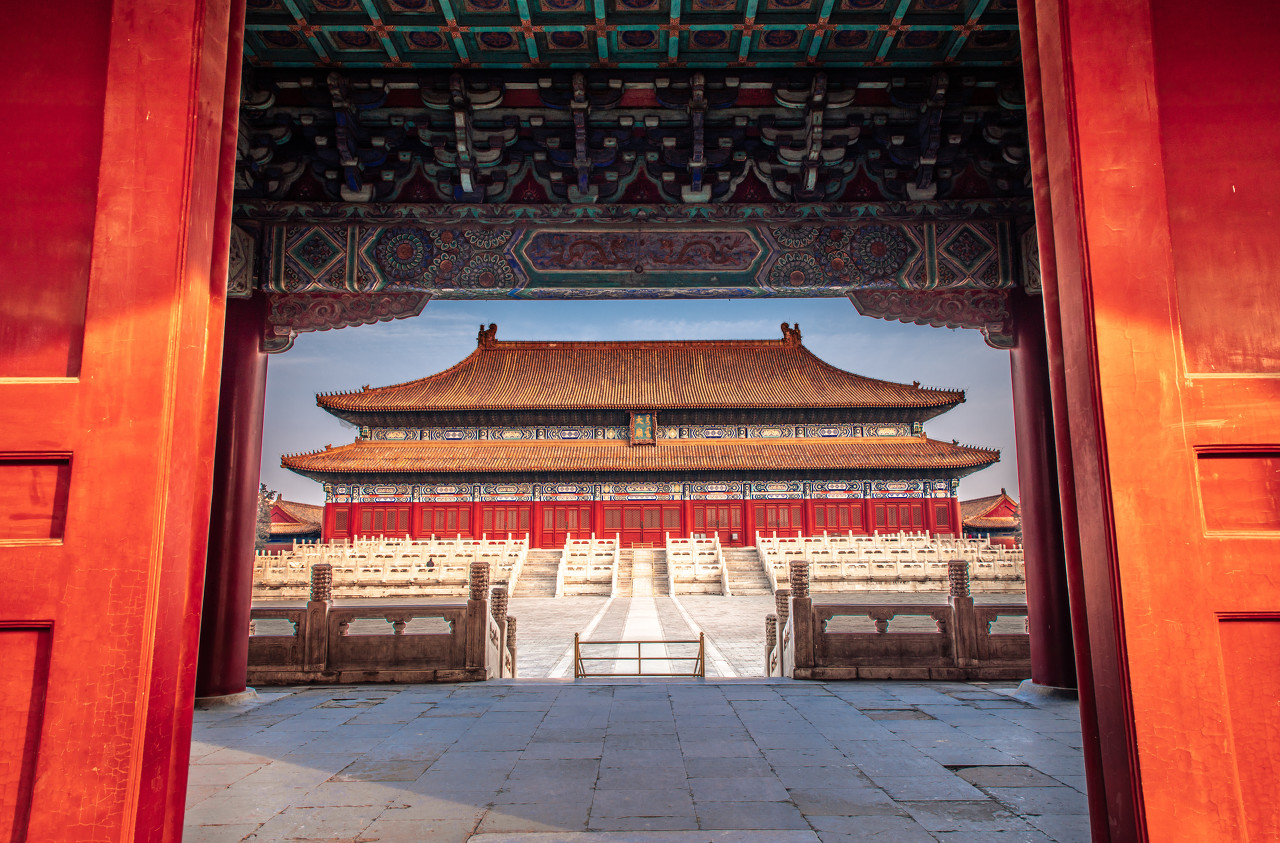
The Imperial Ancestral Temple [Photo via tuchong.com]
It is luxuriously decorated with the ceiling and porch columns containing red gold flowers. The audience hall has fifteen side halls, consecrating the meritorious thrones of the royal family of past dynasties. Among the multitude of buildings within the Palace are as follows: the sacrificial kitchen and storehouse, the slaughter pavilion (the place in which animals used for sacrifice were slaughtered before an ancient royal sacrifice), etc. The most famous feature of the Imperial Ancestral Temple is the ancient cypress that is over hundreds of years old.
Address: Working People's Cultural Palace, Eastern Tian'anmen Square
Route: Take Subway Line 1 or take Bus No. 1, 5, 10, 20, or 52 and get off at Tian'anmen East Station.
7. The Palace Museum
Located in the center of Beijing, the Palace Museum, historically and artistically one of the most comprehensive museums in China, was established on the basis of the Forbidden City, a palace of the Ming and Qing dynasties (1368-1840), and their collection of treasures.
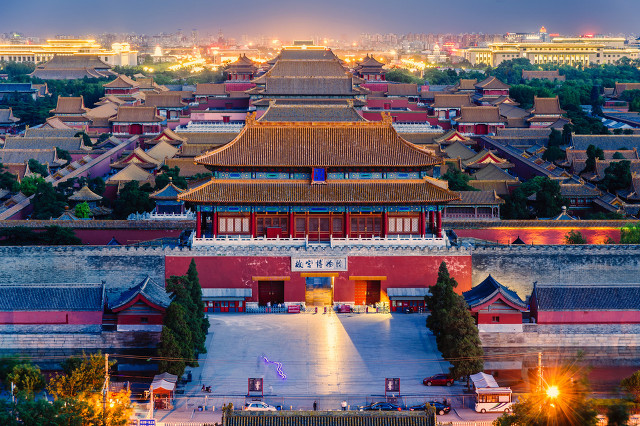
The Palace Museum [Photo via tuchong.com]
It is also known as the Forbidden City. The former residence of imperial clans occupies the center of Beijing, north of Tian'anmen Square.
It was built in the Ming Dynasty (1368–1644) and is the world's largest and best-preserved palace complex. It was added to the list of World Cultural Heritage Sites by UNESCO in 1987. The Palace Museum is one of the must-visit attractions in Beijing along with the Great Wall.
Numerous wonders and rare treasures of Chinese ancient imperial families with great historical value are housed in the Palace Museum. Not only are these national treasures precious, but the buildings of the Palace Museum are also highlights. Golden glazed roofs, along with the red walls and splendid Chinese old-style royal decorations, are architectural wonders.
Address: 4 Jingshan Front Street, Dongcheng District
Route:
By Subway:
Nearest subway stations
Line1 Tian'an men East
By Bus:
Tian'an men East Station: 1, 2, 52, 59, 82, 99, 120, 1(night), 2(night), 17(night), Special 1, Special 2
Tian'an men West Station: 1, 5, 52, 99, 1(night), 1(night), 2(night), Special 1, Special 2
8. Jingshan Park
Jingshan Park is a picturesque royal garden and the largest garden to appreciate the peonies. Jingshan's history dates back to the Liao and Jin dynasties, almost a thousand years ago. It is one of the oldest and most completely preserved imperial gardens in China and used to be an integral part of the imperial palace.
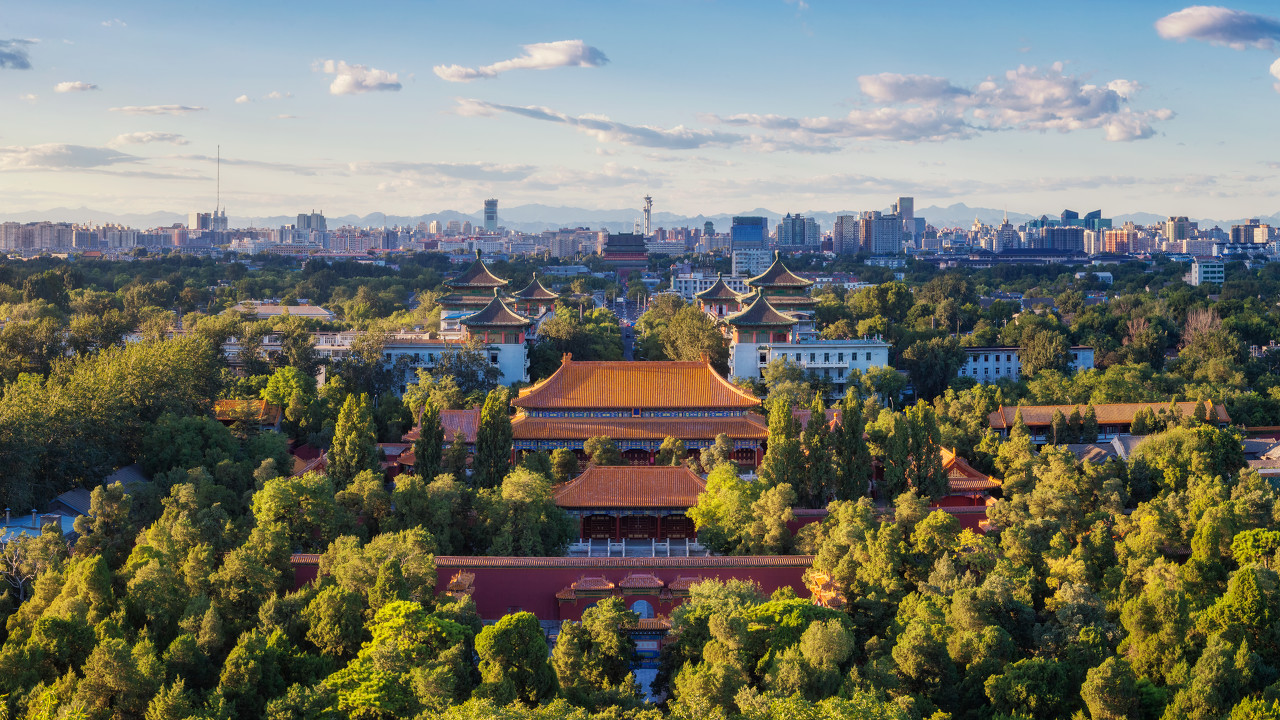
Jingshan Park [Photo via tuchong.com]
The Jingshan Park is home to tens of thousands of herbaceous peonies, and it hosts a peony exhibition in spring, a lotus exhibition in summer, and a chrysanthemum exhibition in autumn each year. Blossoms grace the park in all three seasons while pines and cypresses are evergreen all year round.
The Guandi Temple ancient architectural complex has recently opened to visitors for the first time. Located on the northeast side of the park, Guandi Temple (a.k.a. Huguo Zhonhyi Temple) was first built in the Ming Dynasty dating back over six centuries. At present, it covers an area of 1710 sq.m, with a floor area of 310 sq.m. There are two courtyards arranged on the axis, dedicated to the Divus Guan (“Guandi”) and the True Warrior Great Deity (“Zhenwudadi”) respectively.
Address: No.44 Jingshan West Street, Xicheng District
Route:
By Subway:
Nearest subway stations - Line1 Tian'an men East
By Bus:
Tian'an Men East Station: 1, 2, 52, 59, 82, 99, 120, 126, 1(night), 2(night), 17(night), Special 1, Special 2
9.Wanning Bridge
Wanning Bridge is also named Back Door Bridge or Dian Bridge, located at one of the entrances of the Shichahai Scenic Area near the renowned Gulou (or Drum Tower). Built in 1285 during China’s Yuan dynasty, it was originally given the name Wanning Bridge. This bridge was located north of Dianmen, which was the back door of the imperial city. Therefore, it is also called Back Door Bridge. In fact, it is made of stone, which looks aged today but is still in use.
In the Yuan dynasty, Wanning Bridge spanned across the entrance where Shichahai ran into the Jade River and was the starting point of water transportation of the Yuan dynasty. Under the bridge, there was a valve that functioned to stop water or allowed the boats from the south into the capital of the Yuan dynasty.
This bridge is single-arched, being about 10 meters long and nearly 10 meters wide. In 2000, Beijing Municipal Government repaired and preserved this bridge along with the stone animals above the arch and on the riverbank.
Address: Di'anmenwai Street, Xicheng District
Route: Take Subway Line 8 and get off at Shichahai Station
10. The Drum Tower and the Bell Tower
The Drum and Bell towers are situated at the northern end of the central axis of the Beijing Inner City to the north of Di'anmen Street.
The Drum Tower was built in 1272 during the reign of Kublai Khan, at which time it stood at the very heart of the Yuan capital Dadu. In ancient days, the Drum Tower was the timekeeping center for the whole city and was equipped with bronze clepsydras (water clocks) and drums that were beaten to mark the hours.
The Bell Tower originally housed a huge iron bell. But because its tolling was not loud enough, this was replaced by a massive cast bronze bell over 10 inches thick that is in perfect condition today. The iron bell was moved to the back of the Drum Tower where it has remained for over 500 years. As recently as 1924, the bronze bell could be heard ringing out the 7:00 p.m. chime from a distance of over 20 kilometers.
Address: Gulou Xidajie, Dongcheng District;
Traffic: Bus No. 5 or 60, and Trolley-bus No. 107.

